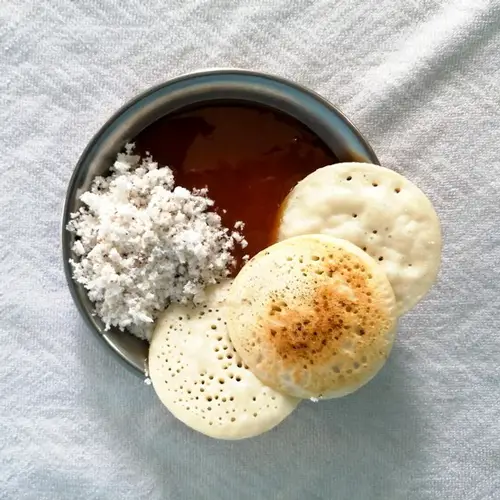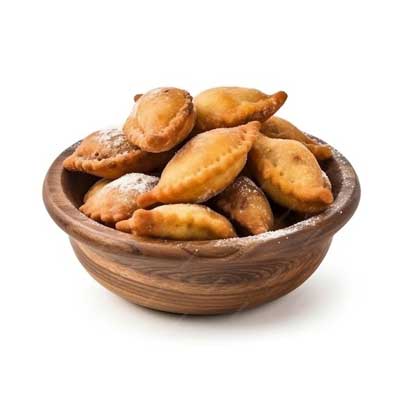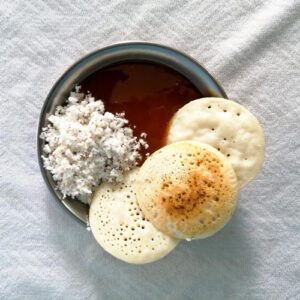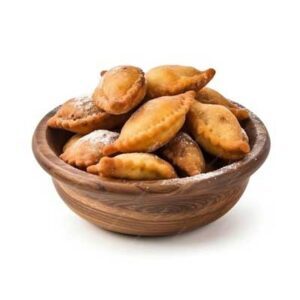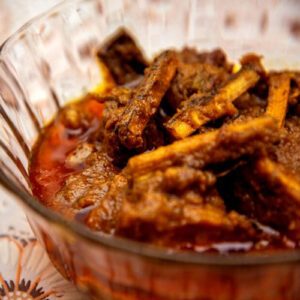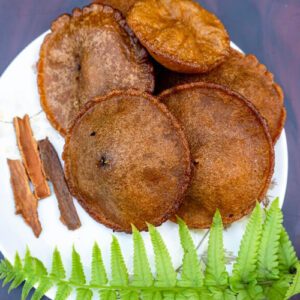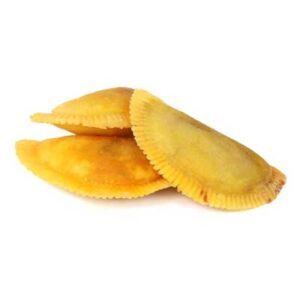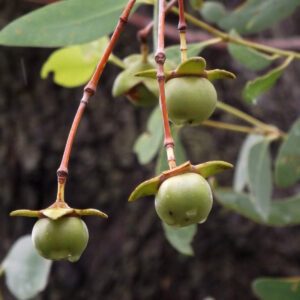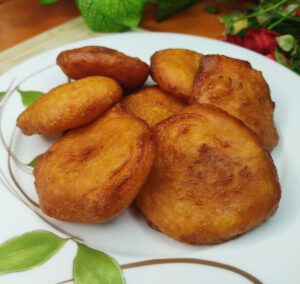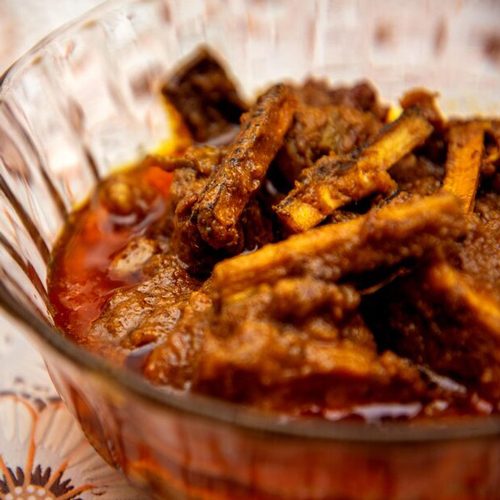Cuisines of Southern Bengal- Barisal, Khulna and Faridpur
The Southern Region of Bangladesh comprises three divisions: Barisal, Khulna, and the proposed Faridpur Division. Each of these divisions has a unique culinary identity, which I have briefly written about in the Regional Specialties blog. In this blog post, I will be writing about some of the most remarkable dishes that you can find in Southern Bengal.
Narkel Pete Chingri: This is a traditional Bengali dish made with coconut and shrimp. The preparation calls for the shrimp mixture to be cooked inside a whole coconut, hence the name Narkel Pete Chingri which translates to Coconut Belly shrimp. This is a popular food in Barishal division that has a lot of coconut items as well that are unique to the area. The recipe requires shrimp, chopped onion, chilli powder, turmeric, cumin paste, garlic paste, whole green chillies, and coconut milk and a whole coconut. You will also need to make dough using atta. Clean the shrimp well and remove its scales. Then mix it with the rest of the ingredients. Now make a hole on top of the coconut and dump all the water. Then put the shrimp and spice mixture inside the coconut through the hole. Now cover the hole with dough and cover the rest of the coconut’s body with mud. You can use dough to cover the whole coconut too. Now light a fire with coal and burn the whole coconut in it for 60 minutes. You can also burn it on a stove if making a fire is not an easy option. Take out the coconut from the fire after 60 minutes and let it cool. Then break the coconut and serve the preparation with rice or pulao.
Pitha Puli and more: Bangladesh is known for its variety of pithas, which are a favorite breakfast item among Bengali people and are often associated with harvest festivals, weddings, Eids, or pujas. Barishal, the rice-producing center of the country, is more famous for its pithas. Pithas can be sweet or savory, and usually made from a dough or batter, which is then steamed, fried or griddled. Some pithas are fried, steamed, or soaked in sugar syrup, molasses syrup, or milk. Clay pots and banana leaves are used in some pitha recipes. Pithas are typically made using rice flour as the main ingredient. Steamed pithas like Bhapa pitha, puli, malpoa, chapri, patra pitha, and til (sesame) pitha are made in winter after the harvest festival. Nokshi pitha, teler pitha, pakon, taal (asian palm) pitha, and mangsho (meat) pithas are deep-fried in oil or clarified butter, often made during weddings and Eids. Chitoi, patishapta, pua pitha, chhita pitha, and bibikhana are made in clay pots, with the clay pot flavor making the pitha unique. Shirgoja is a traditional pitha made with all-purpose flour, fried in deep oil, and soaked in sugar syrup, making it soft from inside and crispy on the outside. Dudhkhejuri is also made in many villages, with rice flour boiled in coconut milk, coconut paste added, and banana leaves separated from stems. People who love pitha take time out of their busy schedules to enjoy the pitha season in Barishal, which has a long-standing tradition of serving the best pithas of all time.
Chui Jhal: Chui, also known as Piper Chaba or Piper chili, is a medicinal plant native to South and Southeast Asia, a flowering vine in the Piperaceae family. In Bangladesh, the stems of the plant are used as a spice in meat and fish dishes. Chui Jhal is a popular dish in Khulna, Bangladesh, made with beef or goat meat and a wild pepper called chui. Originating in the Satkhira district, it is popular all over the country. Chui jhal is traditionally prepared using red meat but it can also be cooked with chicken and prawn or any other protein. Preparing this dish requires protein (read meat, goat meat etc), soaked chui jhal, chopped onions, ginger paste, garlic paste, turmeric powder, chilli powder, coriander powder, cumin powder, garam masala, vegetable oil, and salt. To make Chui Jhal, heat oil in a large pot over medium heat, then add all the ingredients (except for the soaked chui), and then cook for about a minute. Next add the soaked chui and its soaking water. Bring it to a boil, then reduce heat to low, and simmer for 1-2 hours until the protein is tender. Season with salt to taste and serve hot with rice.
Keora Dal: Keroa is a type of fruit that is found in Sundarbans mangrove forest and its fruit are used mainly in the Khulna division for food preparation. Keora Dal is a lentil dish made with lentils, Keora fruit, and spices. The Keora fruit has a sweet and floral aroma that adds a unique flavor to the dish. The ingredients for this dish include two cups of lentils, 200-250 gm of Keora, chopped onion, minced garlic, ginger, turmeric powder, chilli powder, cumin powder, coriander powder, garam masala, oil, and salt to taste. Start by soaking the lentils in water for two hours. Heat oil in a pot and fry the onion. Now add all the spices and mix well. Fry them over oil for 1-2 minutes then add the soaked lentils and bring to a boil. Make sure to add keora flowers just before the lentils are cooked to maintain their flavor. Reduce heat to low and simmer until the lentils are cooked through. Season with salt to taste and serve hot. Other vegetables can be added to the dal as well.
Date Molasses: Date molasses is a memorable food in winter, and date juice is primarily produced in some districts of South Bengal. The highest production is found in Jessore, Chuadanga, Jhenaidah, Faridpur, Madaripur, Shariatpur, Kushtia, and Magura districts. The industry spread rapidly in the greater Faridpur district by the 1940s, bringing fame to these districts in date juice production. Date juice is extracted from date palms, which are cleaned and re-cleaned after seven to eight days. Bamboo pipes are buried in the cleaned part, and two poles are buried on either side of the tube for hanging earthen pots. A barrier rope is tied to two poles and hung along the tube to allow the juice to flow through. The juice is divided into three parts: Jiraan, Dokat, and Jhara juice. The amount of date juice depends on the weather, with cold and clean weather resulting in more juice. Although juice extraction starts in November, the highest amount is available in January.
I hope this post has helped explore the culinary delights of Southern Bengal. As always, this is not a complete list. Many more wonderful delicacies are made and enjoyed in these three divisions. Please let me know in the comments which one of them deserves a spot in this blog or probably a separate write-up on our website. I look forward to hearing your thoughts on these dishes and any other regional specialties you’d like me to cover in the future.

